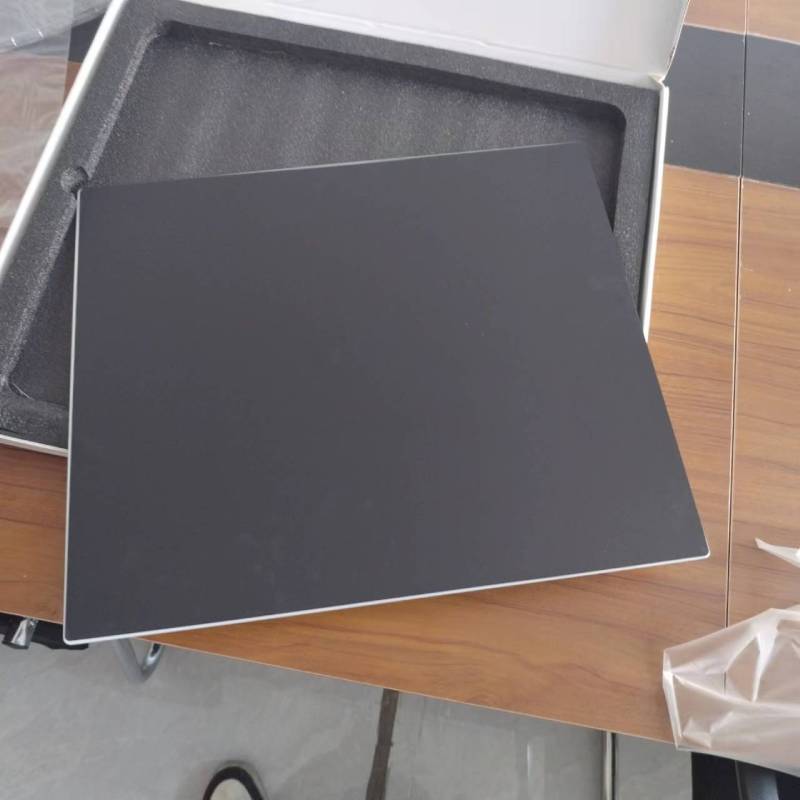Understanding Laminated Glass and Tempered Glass A Comprehensive Overview
Glass has been an essential material in construction, design, and various industries for centuries. Among the myriad types of glass available today, laminated glass and tempered glass stand out due to their unique properties and applications. This article delves into the characteristics, benefits, and uses of laminated glass and tempered glass, allowing for a deeper understanding of these advanced materials.
Laminated Glass Structure and Safety
Laminated glass is created by sandwiching a layer of polyvinyl butyral (PVB) or ethylene-vinyl acetate (EVA) between two or more sheets of glass. This process not only enhances the glass’s structural integrity but also improves its safety. One of the most significant advantages of laminated glass is its ability to hold together when shattered. The interlayer acts as a binding agent, preventing the glass shards from falling apart, thus reducing the risk of injury.
The safety features of laminated glass make it an ideal choice for areas prone to extreme weather, such as hurricanes or strong winds. It is commonly used in skylights, glass façades, and in vehicles, particularly windshields. In addition, laminated glass offers excellent sound insulation, making it a popular choice for buildings near noisy environments, such as airports or busy roads.
Moreover, laminated glass can also provide UV protection, blocking up to 99% of harmful ultraviolet rays. This property helps prevent fading of furniture and artwork indoors, adding to its appeal for residential and commercial buildings alike.
Tempered Glass Strength Through Heating
On the other hand, tempered glass, also known as toughened glass, is produced by heating regular glass to over 600 degrees Celsius and then rapidly cooling it. This tempering process alters the structure of the glass, significantly increasing its strength and thermal resistance. As a result, tempered glass is much less likely to break under stress compared to standard glass.
laminated glass and tempered glass
One of the defining characteristics of tempered glass is its ability to break into small, blunt pieces rather than sharp shards, reducing the risk of injury in case of accidents. Because of this safety feature, tempered glass is widely used in applications where human safety is a concern, such as in shower doors, glass table tops, and storefronts.
Additionally, tempered glass is ideal for use in environments that experience rapid temperature changes, such as in glass doors and windows that are exposed to direct sunlight. Its durability and resistance to thermal stress make it an excellent choice for both residential and commercial applications.
Comparing Laminated and Tempered Glass
While both laminated and tempered glass offer enhanced safety compared to standard glass, they serve different purposes and have various advantages. Laminated glass excels in situations where sound insulation and UV protection are paramount. It is also favored for applications requiring heightened safety, such as in areas where glass is exposed to potential breakage.
Conversely, tempered glass is preferred for its incredible strength and ability to withstand thermal stress. It is often chosen for applications where high-impact resistance is needed, and the risk of breakage is high.
Conclusion Choosing the Right Glass
When deciding between laminated glass and tempered glass, it is essential to consider the specific needs and requirements of the project. Each type of glass offers unique benefits that can enhance safety, durability, and performance. Understanding these differences allows architects, builders, and homeowners to make informed decisions that will lead to safer and more efficient structures.
In summary, both laminated glass and tempered glass are remarkable materials that push the boundaries of traditional glass applications. Their innovations have paved the way for safer living spaces and improved architectural designs, proving that glass can be both functional and aesthetically pleasing. Whether for new constructions or renovations, these materials continue to revolutionize the glass industry, providing exciting possibilities for the future.
 Afrikaans
Afrikaans  Albanian
Albanian  Amharic
Amharic  Arabic
Arabic  Armenian
Armenian  Azerbaijani
Azerbaijani  Basque
Basque  Belarusian
Belarusian  Bengali
Bengali  Bosnian
Bosnian  Bulgarian
Bulgarian  Catalan
Catalan  Cebuano
Cebuano  Corsican
Corsican  Croatian
Croatian  Czech
Czech  Danish
Danish  Dutch
Dutch  English
English  Esperanto
Esperanto  Estonian
Estonian  Finnish
Finnish  French
French  Frisian
Frisian  Galician
Galician  Georgian
Georgian  German
German  Greek
Greek  Gujarati
Gujarati  Haitian Creole
Haitian Creole  hausa
hausa  hawaiian
hawaiian  Hebrew
Hebrew  Hindi
Hindi  Miao
Miao  Hungarian
Hungarian  Icelandic
Icelandic  igbo
igbo  Indonesian
Indonesian  irish
irish  Italian
Italian  Japanese
Japanese  Javanese
Javanese  Kannada
Kannada  kazakh
kazakh  Khmer
Khmer  Rwandese
Rwandese  Korean
Korean  Kurdish
Kurdish  Kyrgyz
Kyrgyz  Lao
Lao  Latin
Latin  Latvian
Latvian  Lithuanian
Lithuanian  Luxembourgish
Luxembourgish  Macedonian
Macedonian  Malgashi
Malgashi  Malay
Malay  Malayalam
Malayalam  Maltese
Maltese  Maori
Maori  Marathi
Marathi  Mongolian
Mongolian  Myanmar
Myanmar  Nepali
Nepali  Norwegian
Norwegian  Norwegian
Norwegian  Occitan
Occitan  Pashto
Pashto  Persian
Persian  Polish
Polish  Portuguese
Portuguese  Punjabi
Punjabi  Romanian
Romanian  Russian
Russian  Samoan
Samoan  Scottish Gaelic
Scottish Gaelic  Serbian
Serbian  Sesotho
Sesotho  Shona
Shona  Sindhi
Sindhi  Sinhala
Sinhala  Slovak
Slovak  Slovenian
Slovenian  Somali
Somali  Spanish
Spanish  Sundanese
Sundanese  Swahili
Swahili  Swedish
Swedish  Tagalog
Tagalog  Tajik
Tajik  Tamil
Tamil  Tatar
Tatar  Telugu
Telugu  Thai
Thai  Turkish
Turkish  Turkmen
Turkmen  Ukrainian
Ukrainian  Urdu
Urdu  Uighur
Uighur  Uzbek
Uzbek  Vietnamese
Vietnamese  Welsh
Welsh  Bantu
Bantu  Yiddish
Yiddish  Yoruba
Yoruba  Zulu
Zulu 

